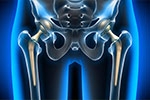As a leading orthopedic specialist dedicated to helping patients find relief from hip pain, I frequently recommend cortisone injections as an effective non-surgical treatment option. In the first installment of our four-part series on non-surgical orthopedic treatments, I'll provide a comprehensive overview of cortisone injections and how they can help manage hip-related discomfort and other sports injuries.
What Are Cortisone Injections?
Cortisone injections, also known as corticosteroid injections, are a powerful tool in managing inflammation and pain in various joints, including the hip. These injections combine a local anesthetic with a synthetic version of cortisol, a naturally occurring hormone in the body that helps reduce inflammation. By delivering a concentrated dose directly to the affected area, cortisone injections can provide significant pain relief and improved mobility.
How Do Cortisone Injections Work?
The primary mechanism of cortisone injections is to suppress the body's inflammatory response. When you experience hip pain, inflammation is often the underlying culprit. Conditions such as arthritis, bursitis, tendinitis, and other inflammatory joint disorders can cause significant discomfort and limit your daily activities. The corticosteroid medication works by:
- Reducing the production of inflammatory chemicals in the affected area
- Decreasing swelling and irritation around the joint
- Providing temporary pain relief
- Improving joint function and mobility
Conditions Treated with Cortisone Injections
At the American Hip Institute, we commonly recommend cortisone injections for patients experiencing:
- Intra-articular injuries
- Trochanteric bursitis
- Iliopsoas tendonitis
- Piriformis syndrome
- And more
The Injection Procedure
As an experienced hip arthroscopic surgeon, I perform cortisone injections with precision and care as the cortisone medication is carefully administered directly into the affected area. The procedure is minimally invasive with the entire process usually taking less than 15 minutes.
What to Expect After the Injection
Most patients experience some level of pain relief within a few days of the injection. The effects can last anywhere from a few weeks to several months, depending on the individual and the underlying condition. Some key points to remember:
- Initial discomfort or a temporary pain "flare-up" can occur
- Rest and ice are recommended immediately after the procedure
- Gradual return to normal activities is typically advised
- The full benefits are usually realized within 3-5 days
Important Considerations and Limitations
While cortisone injections are highly effective, they are not a permanent solution. They should be viewed as part of a comprehensive treatment plan. Limitations include:
- Potential side effects such as temporary pain increase
- Limited number of injections per year (typically 3-4)
- Not suitable for all patients
- Potential for temporary joint weakening with repeated use
Personalized Care at the American Hip Institute
Every patient's journey is unique. At the American Hip Institute, we take a personalized approach to pain management. Cortisone injections are just one of many tools we use to help patients regain mobility, reduce pain, and improve their quality of life.
If you're experiencing persistent hip pain or other joint pain, I encourage you to schedule a consultation. Together, we can develop a tailored treatment strategy that addresses your specific needs and helps you return to the activities you love.
In our next installment of this non-surgical treatment series, we'll explore another advanced approach to managing hip pain.





